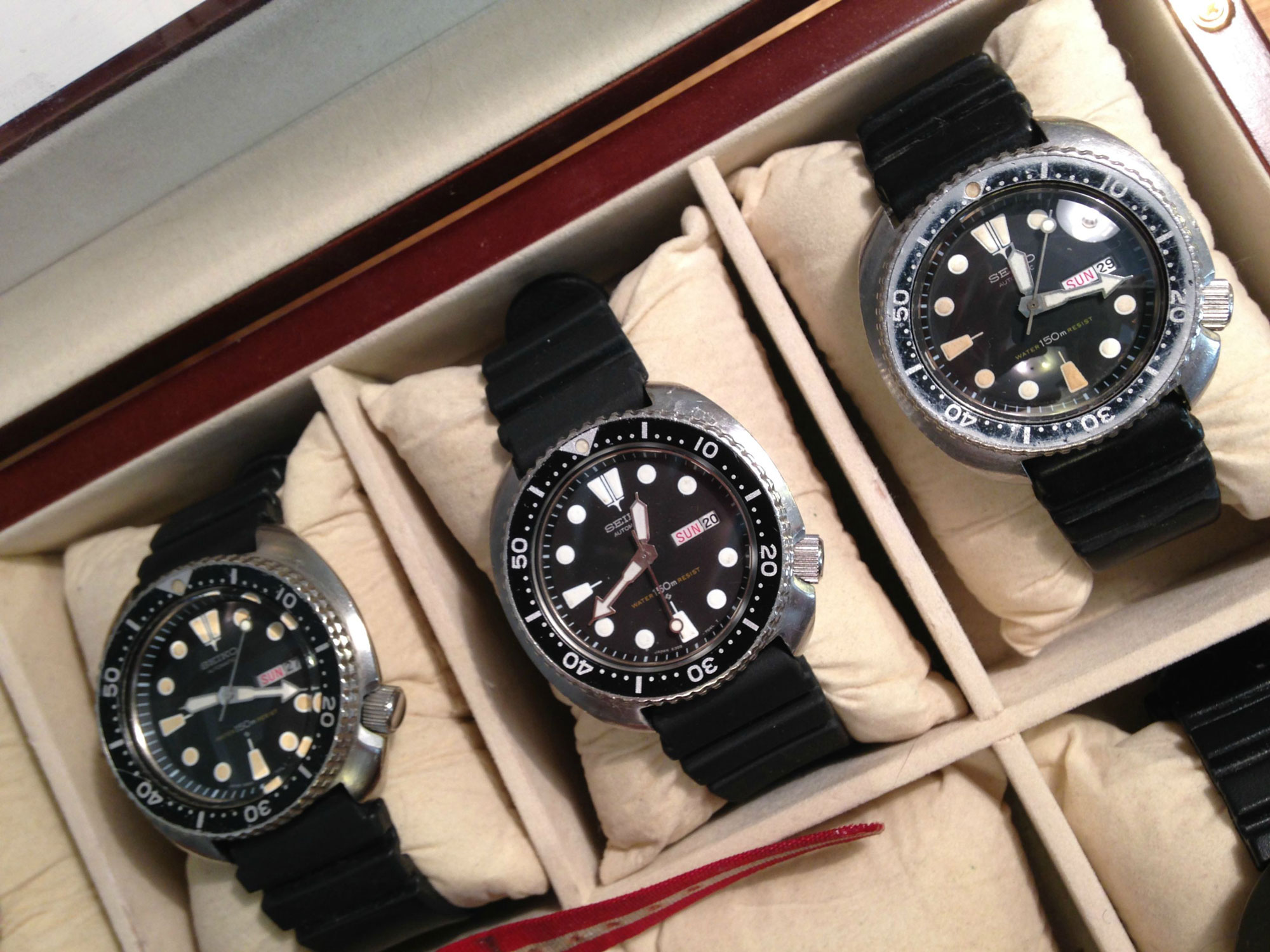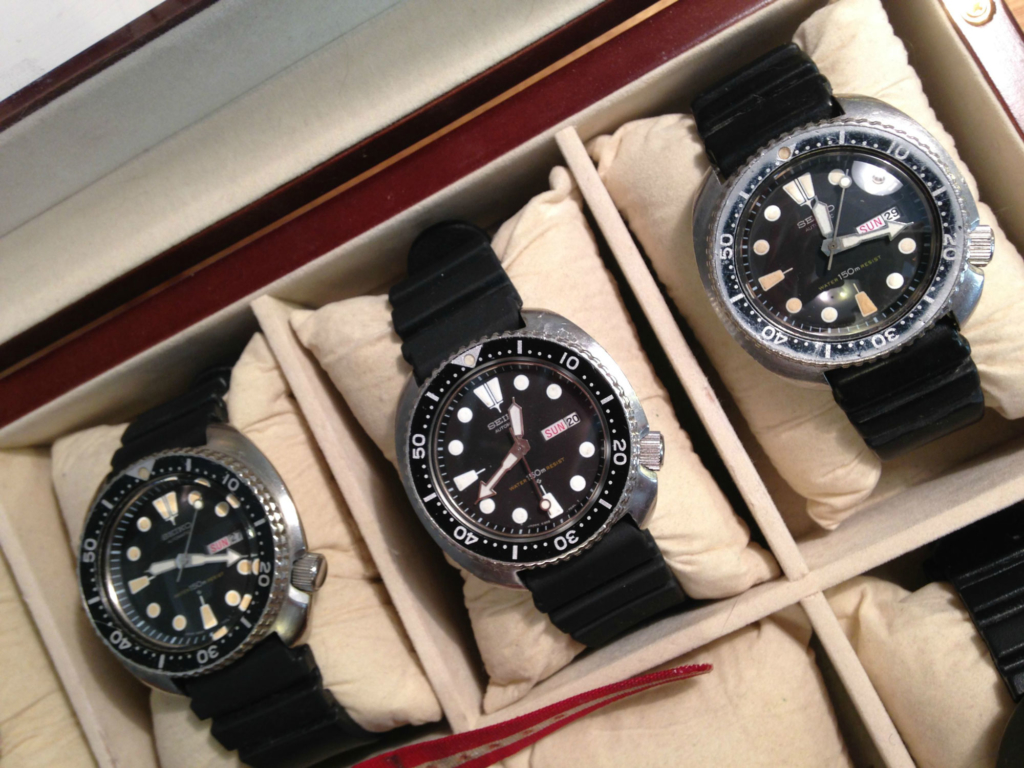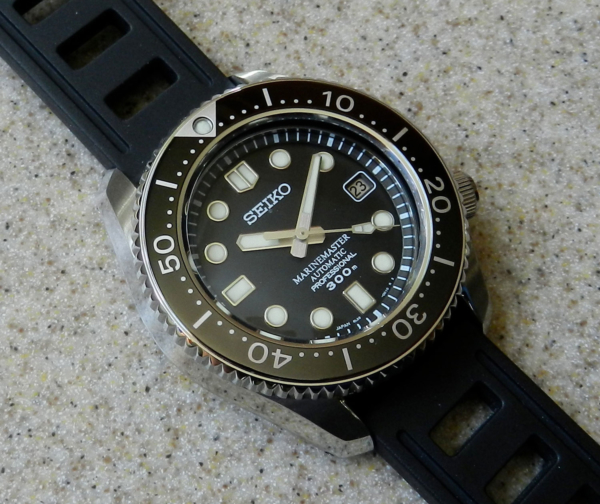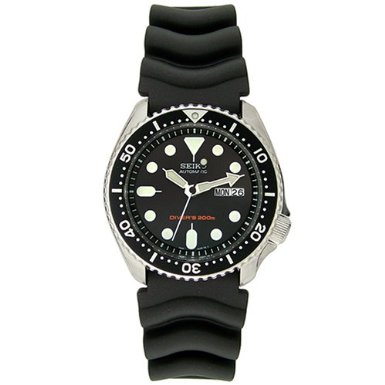We here at W&W were recently lucky enough to score an interview with a cornerstone of the vintage Seiko community, Spencer Klein. Not only has Mr. Klein spread the gospel of Seiko across the internet on forums, Reddit threads, and web articles, his technical expertise helps to guide one of the premiere Seiko repair shops in the vintage community, Klein Vintage Watch. We’ve decided to share Mr Klein’s interview in his own words.
worn&wound: Could you start us off with your name and occupation?
Spencer Klein: Spencer Klein, watchmaker
w&w: How did you get involved with the watch hobby?
SK: I got started with watches back when I was a teen, when a friend traded me a 14k gold Girard-Perregaux for a T-shirt I had (Aviators, local Denver band, never went anywhere). The auto-wind didn’t work, so I took it to a local jewelry store. They said it wasn’t fixable, wasn’t worth fixing, which I thought was total BS. I’d grown up fixing anything and everything with my dad. He taught me problem-solving, logic, methodical thinking. He always said that every problem was solvable, and wasn’t daunted by anything. He’d just go for it. So, in this case, I went for it. I fixed it myself… It didn’t stay fixed for a super long time, mostly because a spring-bar broke and the watch ended up in a pocket in my shorts, which my mom then put through the washer. And the dryer. And then she threw the watch away.
I’ve used this approach that I learned from my dad for all of my hobbies: vintage VW’s, vintage American cars from the 1950s, vintage Vespas, watches, WW2 field equipment, radios, optics, woodworking. I’ve always preferred to do the work myself, to learn and understand everything about what I’m doing, to know it cold. That way if I screw up I don’t have to go far to find someone to blame. I’m just much happier doing work on my own pieces myself. I’m very picky, driven, exacting, and impatient. I want work done to my standards and in my timeframe. I’m not a good customer, so I make sure that for the most part, I’m not.
This round of vintage watches started in earnest about five years ago, when a work colleague showed me his Seiko 6309-7049 diver. I loved the robustness of it, the clean design, the case curves, the high contrast of black dial and white markers, and solid materials (not plated). It was a masterpiece of industrial design. I’d always loved watches, and this started me in on it again.
What started me on the path to doing this full time is that I bought a chronograph, a 6139-6005, and I wanted to spring for a full service, to get the watch to 100%. I sent it off to someone who was, at that time, said to be the best of the best. I got the watch back pretty quickly, but found that he hadn’t actually done anything. He hadn’t fixed the watch, hadn’t rebuilt it at all. And he was a dick about it. So, I had to come up with a Plan B. The problem with that was that almost no one else worked on these. People avoided working on them, most people wouldn’t touch them, and the few guys who did had backlogs of close to a year.
That immediately set me on this path. I started bugging anyone I could to teach me. I read and absorbed every Seiko technical guide I could find (they’re all online, but I bought hard copies). I looked at online tutorials. I bothered my local watchsmiths, both masters in their 80s, to teach me. And I put myself to the challenge of learning the 6139. I got as many broken / bad movements as I could find, and I rebuilt a 6139 nearly every day for a month. I averaged four or five rebuilds a week. My goal was to learn the movement cold, learn it to the point that I didn’t have to even sort the parts to put one back together correctly. To be able to see what the problem was just by watching the timegrapher. To know what “good” looked like.
I did all this work, and talked about it a lot, and guys started asking if they could send their watches in. I said yes, why not. More experience, more learning opportunities. And the watches kept coming in, and people kept being pleased with my work. I treated their watches as though they were my own, and that approach worked for them I guess. So many watches started coming in that I regretfully started to have to charge simply because it was eating up so much time for me. My hope was that it would stop people from sending in work. It did the opposite – more work came in. It just kept building, and more word-of-mouth kept happening, and my hobby began slowly turning into a business. I used to work for a giant multinational, one that was in double-digit negative growth. My position was eliminated, and me along with it, but it didn’t occur to me that I could do this full-time. My wife had to say it. She was utterly convinced that I could do it, that it would succeed. That’s a frightening thing for a married father of small children to contemplate. I’d spent decades in the warm embrace of corporate America. Striking out on my own seemed insane, but she was convinced, so we did it.
w&w: What sort of services do you provide at Klein?
SK: I do everything associated with servicing – free filmed evaluations, full movement rebuilds, consultation, reluming, cosmetic restoration, seals etc. I’m really about functional restoration – putting everything to where it should be, making everything function as it should. Someone joked at me once that it seemed that for me watches were like little animals, and I was going to help them. It’s true, truly. It is truly distressing to see an abused watch, and I can barely stop myself from jumping in to fix the problem. I don’t do casework so much – very light polishing by hand is as far as I go. But I have a business partner who does do casework if the customer wants it.
w&w: You’ve gained a reputation in the vintage watch community as a strong devotee of Seiko. Tell us more about that, and any other brands you might own.
SK: I love Seiko to death. The only brands I own besides Seiko are Omega, Girard-Perregaux, and Waltham (pocket watches). The first Seiko I bought was a 6106-8237, for I think about $20… for being so cheap, and so beaten, I was floored when it arrived running. A very different beast from the 6309 but the same grammar of design behind the overall look – cleanliness, legibility, strength, simplicity. I put in a new crystal, and moved forward.
What really won me over though was opening up the caseback. A watch so beaten, so worn, and the case design was so superior that the movement looked new. Shiny, bright, clean. Very impressive. The more I learned about Seiko, their grammar of design, their philosophy, their innovations, the more I loved the brand. Seiko is all in-house. They set their own goals, beat out their own path. They led the quartz revolution with some unreal movements. They set standards for non-Swiss chronometers that pissed the Swiss off so much they changed the rules for COSC. They created the first automatic chronograph, the first analog quartz chronograph. Led the LCD revolution. And did it all with some beautiful designs. I love Seiko.
Even today, you can go out and buy a brand-new SKX007 on a solid-link bracelet for under $200. This is a world-beater of a watch. I own two. One of mine is over ten years old, and is unserviced. It runs within a few seconds per day. Per day. On the timegrapher it puts out a flat line with amplitudes in the 270 range. I was wearing it when my second daughter was born, and it’ll be hers some day, and I am absolutely confident that she will receive a working timepiece, not just a piece of sentimental memorabilia. I will make sure of it.
w&w: Are there any particular models in the Seiko catalog that are special to you?
SK: I’ve never been able to come up with an answer for the “Just One Watch” challenge. Here are my front-runners, what I’d consider a workable sample to live with if I had to ration myself:
• 6309-704x (“x” in this case is the final number, either 0 or 9, which only denotes distribution area), Suwa production
• 7549-7010 Tuna
• 7549-7009 “Golden tuna”
• H558-500x “Arnie”
• 7548-700F
• 7548-7000
• 7A28-7049
• SKX007
• 6139-6005 “Resist” aka “Pogue”
• 6139-6005/9 blue dial (N. American issue)
• 6138-0020 “Tokei Zara”
• 0634-5019 LC Chronograph
• 6138-3009
• 6138-001x “Yachtman”
• Omega Speedy Pro
w&w: You’re the sole supplier for certain reproduction parts in the Seiko community, tell us about that.
SK: Back when I was really starting to do a lot of work for myself, and guys started sending in a lot of work, one of the pillars of the Seiko community and a good friend asked if I’d do his movement work for him. This was Jonathan Koch, of EastTech Manufacturing. He and I then worked together on projects – he’d do the casework etc, and I’d do the assembly and movement service. Jonathan was a giant in the world of Seiko. He was a genius, a mechanical engineer, an innovator, a relentless problem-solver, a master at casework. Seiko has a few issues, one of them being their love of new models. They tend to turn over model types pretty quickly, and to end support for obsolete models fairly quickly afterwards.
This included super-critical things like original Hardlex crystals, and the correct seals for the core watch models we loved: the 6105s, 6106s, 6119s, 6309s, 754x’s, 6138s, 6139s. Jonathan’s spark of inspiration was to reverse-engineer these crystals from NOS Seiko examples. He went a step further with his research and ID’d critical variants, such as the Type I and Type III crystals used in the 6105 divers. He had these crystals recreated and remanufactured to a very high standard, and was the only vendor in the world who sold them. When he got sick this last May, he knew he didn’t have long. The last few times we spoke, he talked repeatedly about how the crystals were his legacy, something he was truly proud of, something he wanted to survive him. Before he died on June 7th 2014, he made arrangements to transfer his crystals to me – his contracts, future orders, and rights. So, as a result, we are now the sole source worldwide for the best, most accurate Hardlex crystals of the following types discussed here (registration required). We are also bringing back one of Jonathan’s modified designs. He created a super-high topped version of the 330W10GN00 crystal he called the “bubble boy”. Very high dome, and something he was proud of.
w&w: Walk us through your average restoration.
SK: Watches come in in a wide range of condition, but they all have their challenges. I treat every watch the same – full evaluation, typically filmed, and then a discussion with the owner about options and what they want to do. If they decide to go ahead, every watch goes through the same process:
• Full disassembly including cap jewels and mainspring
• inspection of every part
• hand cleaning if needed
• ultrasonic cleaning
• Full case rebuild (cleaning by hand, ultrasonic cleaning, new seals)
• reassembly according to the Seiko servicing guide for the model
• timing & adjustment on an electronic timegrapher
If any additional stuff is needed, like reluming, etc, that happens as the movement is running in after service. This is the most efficient use of time. Oh, one last last note. The filmed evaluations. I’m actually really proud of this. No one else does it. As far as I know, I am the only watchsmith to do this extra bit of communication for my customers. Everyone I work for is remote. I’ve got customers all over the world. One is as far away as Christmas Island (where the giant land crab lives), west of Australia. I’ll never meet any of these people, yet they’re trusting me with their watches. As a customer, I’ve always wanted to know what was going on with whatever was happening. I like transparency. So, it seemed natural to want to show people what was up with their watches, and to be able to spread the joy that comes naturally with a serviced watch (no, seriously). I’ve had some of the older guys (the same ones who scoffed at me for daring to work on watches at all) say “that was interesting that you did that at the beginning, but I’m sure you don’t do it anymore”. Then I get to tell them that, yes, I do.
Anyway, it’s sort of a signature thing of mine, and unless it gets in the way of work, I’ll keep doing it.
w&w: Is there any watch you’d consider your grail?
SK: I own most of my grails. I love divers most of all, and I own most of the grails I’ve wanted. The only exception is the 6159-7000 300m diver. I’d LOVE to own one. I’ve owned Seiko’s modern reissue of it, the Marinemaster SBDX001, but it’s just not the same. All of the other “grail” type watches I do own, but what is a grail for me might not be the same grail for anyone else.
w&w: What do you see for the future of Klein Vintage Watch?
SK: Since I’m already very busy with watch work (wait times are easily more than five months now), my wife has become half-owner of KVW, and is in charge of the crystal side of things. We are getting the crystal side of things up and running, and will look to adding crystal models using the same reverse-engineering done before. We are also working to have some of the most critical seals reverse-engineered, including the super-important DJ0060B01 button seal. Seiko used it in everything. There are reproductions being made, but none of them are correct. This is a short-term goal. Longer term, no idea. T-shirts? A line of surfboards? Mostly I just want to focus on restorations, and to be constantly challenging myself.
w&w: Do you have any rules for buying for those of us interested in buying their first vintage Seiko?
SK: These rules are the ones I’ve adhered to for many years. Keep in mind that I want to buy original unrestored watches. I have no interest in buying a restored watch.
Here are the things I always look for:
• White / undegraded lume
• unpolished, original case condition
• clean dial
• unfaded colors
• dirt & grot (this means the watch hasn’t been restored)
• good, non-professional photography
• ideally located in the USA and/or Australia
• signs of wear, but not abuse
Things I avoid:
• any auction with high-grade photography
• anything relumed, or with degraded lume
• any kind of casework
• auctions that have any more than the barest minimum of text. If I look at an auction, and I see a wall of text, I move on. I don’t care what the watch is.
I want an original, untouched, unrestored watch from a seller who doesn’t appear to be actively trying to cheat me. I want to be the one to make every decision about what is to be done to bring a watch back.
Also, be sure to check out his forum, wristsushi.com, for more vintage Seiko info!
If you wish to contact Spencer, email him here
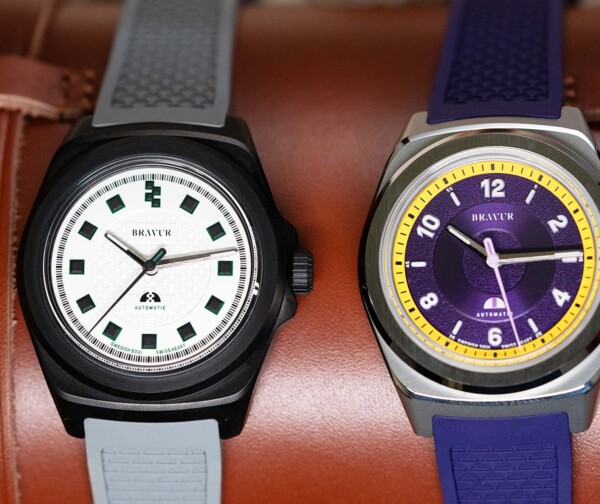




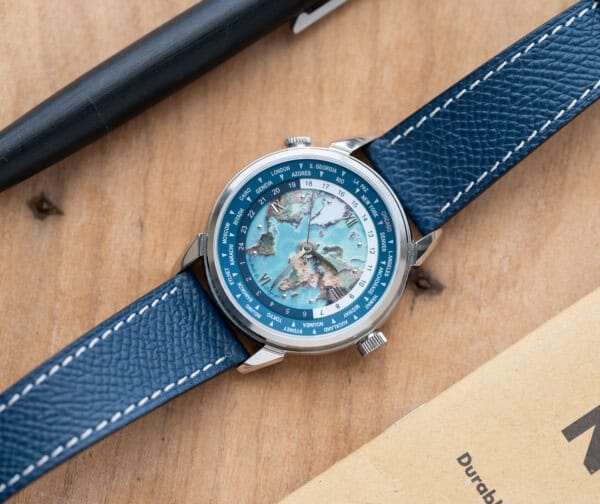



 Featured Videos
Featured Videos




